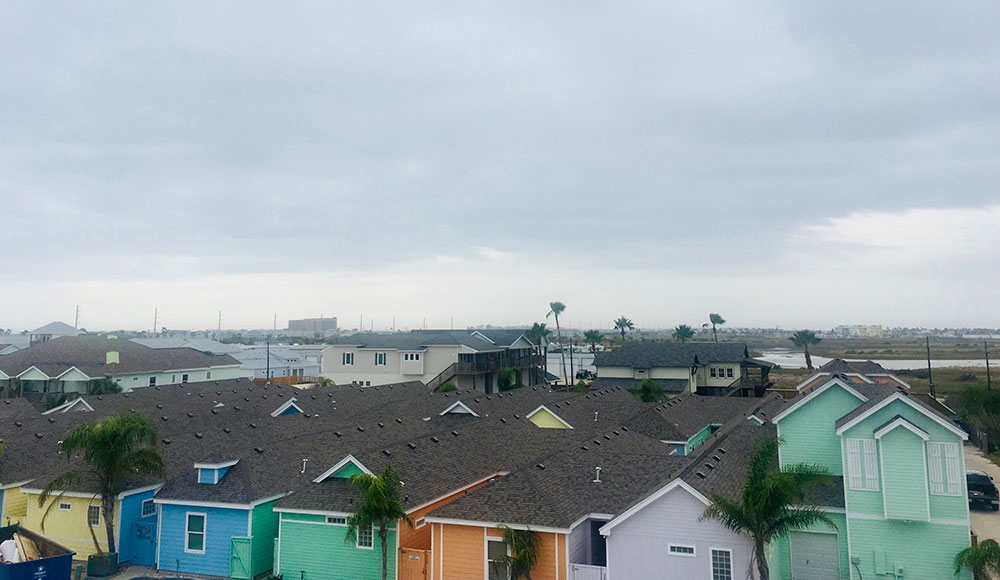Choosing the right roofing material for coastal environments involves considering factors like salt exposure, high winds, humidity, and temperature fluctuations. Coastal areas present unique challenges that can impact the durability and performance of roofing materials. Here’s a comprehensive guide to help you select the best roof for a coastal environment:
1. Material Durability
Why It Matters: Coastal environments expose roofing materials to harsh conditions, including salt air and high winds. Choosing materials that can withstand these conditions is crucial for long-term performance.
Recommended Materials:
Metal Roofing: Aluminum, copper, and stainless steel are highly resistant to corrosion and durable in coastal environments.
Concrete and Clay Tiles: These materials are robust and less prone to damage from salt air.
Synthetic Roofing: High-quality synthetic materials designed to mimic traditional roofing can offer good resistance to coastal conditions.
2. Corrosion Resistance
Why It Matters: Salt air can accelerate the corrosion of roofing materials, particularly metals.
Recommended Materials:
Galvanized or Galvalume Steel: These materials are coated to resist rust and corrosion.
Coated Aluminum: Aluminum roofs with protective coatings can withstand salt exposure.
Copper: Naturally resistant to corrosion and develops a protective patina over time.
3. Wind Resistance
Why It Matters: Coastal areas like Port Aransas, Rockport, Portland, North Padre Island and Corpus Christi often experience high winds that can lift or damage roofing materials.
Recommended Materials:
Metal Roofing: Metal roofs are often designed to withstand high winds and can be secured with additional fasteners.
Impact-Resistant Shingles: Look for shingles rated for high wind speeds and impact resistance.
Tile Roofing: Concrete and clay tiles can be installed with special clips or fasteners to improve wind resistance.
4. Humidity and Moisture Resistance
Why It Matters: High humidity and frequent rain in coastal areas can lead to mold, mildew, and rot.
Recommended Materials:
Synthetic Roofing: Many synthetic materials are designed to resist moisture and mold.
Metal Roofing: Metal does not absorb moisture and is resistant to mold and mildew.
Modified Bitumen: This type of roofing has moisture-resistant properties and is often used in coastal environments.
5. Energy Efficiency
Why It Matters: Coastal climates can vary in temperature, so choosing a roofing material that improves energy efficiency can help manage indoor temperatures.
Recommended Materials:
Metal Roofing: Reflective coatings can improve energy efficiency by reflecting solar heat.
Cool Roof Materials: These materials are designed to reflect more sunlight and absorb less heat, reducing cooling costs.
6. Maintenance Requirements
Why It Matters: Coastal roofing materials can require more frequent maintenance due to the harsh environment.
Recommended Materials:
Low-Maintenance Materials: Metal, concrete, and clay tiles generally require less maintenance compared to traditional asphalt shingles.
Regular Inspections: Regardless of material choice, regular inspections and maintenance are essential to address any damage promptly.
7. Aesthetic Considerations
Why It Matters: Roofing materials come in various styles and colors that can complement the coastal aesthetic of your home.
Recommended Materials:
Metal Roofing: Available in various colors and finishes, including options that mimic traditional materials.
Tiles: Concrete and clay tiles come in a range of colors and styles that suit coastal architecture.
Synthetic Roofing: Offers a wide range of appearances, including those that mimic wood, slate, or tile.
8. Cost and Installation
Why It Matters: Budget considerations and installation requirements can impact your choice of roofing material.
Recommended Materials:
Cost-Effective Options: Asphalt shingles are generally less expensive but may require more maintenance.
Investment in Durability: Investing in higher-cost materials like metal or tile can provide long-term savings through durability and lower maintenance needs.
Professional Installation: Ensure that your roofing is installed by a contractor experienced in coastal environments to address specific challenges effectively.
9. Local Building Codes and Regulations
Why It Matters: Coastal areas often have specific building codes and regulations designed to ensure safety and performance.
Recommended Materials:
Compliance: Check local building codes and choose materials that meet or exceed these requirements.
Consult with Experts: Work with a local roofing professional who is familiar with regional codes and conditions.
In conclusion, choosing the right roofing material for a coastal environment requires careful consideration of durability, corrosion resistance, wind resistance, and other factors. By selecting materials designed to withstand the unique challenges of coastal climates, you can ensure a long-lasting, effective roofing solution for your home. Consult with a roofing professional who understands the specific needs of coastal areas to make an informed decision and protect your home from the elements.
Contact Us
Texas Coastal Roofing and Construction can help you maintain your roof’s excellent condition. We offer a variety of services. Call us today at (361) 332-1263to learn more. We serve the Corpus Christi coastal bay area including Portland, Rockport, Port Aransas, McAllen, North Padre Island, Kingsville, Mathis and more!


Recent Comments